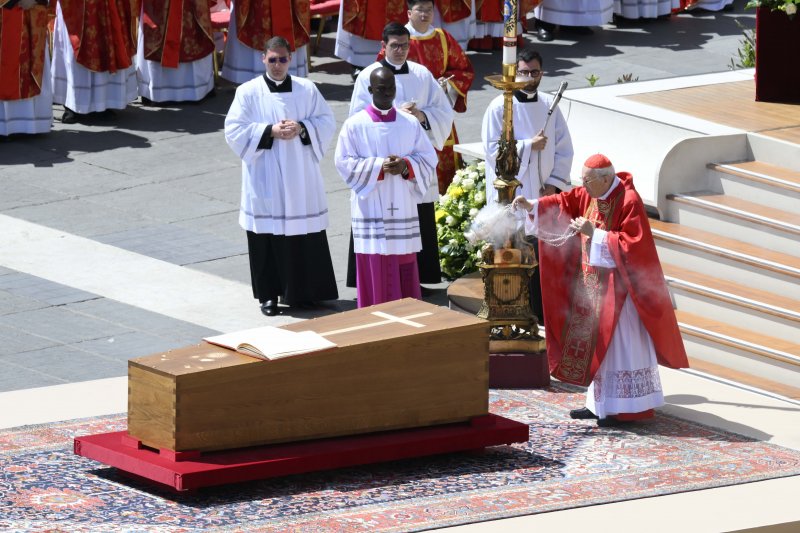
By Matt Miller, Diocesan Director of Worship
When a pope dies, it sets into motion a very specific chain of events, from mourning the passing of the Holy Father to the selection of a new pontiff.
Verification of death, mourning and funeral
While the pope is pronounced dead by medical doctors, there is a formal pronouncement of his death by the camerlengo of the Holy Roman Church. The camerlengo (who happens to be the former bishop of Dallas) is the person who is the caretaker and administrator during this time. He consults with senior cardinals to make arrangements for the papal funeral and makes day-to-day decisions of the Holy See. And after the pronouncement of death, the camerlengo also has the duty of sealing the pope’s official residence and securing his personal papers.
The official mourning period lasts nine days, known as “Novemdiales.” This comes from the ancient Roman custom of a nine-day funeral rite. The faithful are called to pray for the pope during this time, and Mass is celebrated for the Holy Father each day of the period at St. Peter’s.
The Funeral for a pope takes place 4-6 days after death. In the days before the funeral, the body of the pope is placed at St. Peter’s Basilica for the faithful to come and pay their respects. The funeral Mass is celebrated at St. Peter’s, with the Dean of the College of Cardinals presiding.
Pope Francis was not buried in the traditional triple coffins of cypress, lead and oak, instead asking to be buried in a single wooden coffin lined with zinc. Typically, a deceased pope would be buried in the Vatican grottos, but Pope Francis requested to be buried at St. Mary Major Basilica in Rome, a church he visited on a very regular basis.
Selection of a new pope (the conclave)
Cardinal electors (those cardinals under 80 years old) from around the world have 15 days from the death of the pope to come to Rome to begin the process. They will gather daily to discuss the needs and state of the Church and any major issues. At the conclusion of the mourning period, the conclave to select the new Holy Father begins. Voting cardinals stay at the Domus Sanctae Marta guest house and meet in the Sistine Chapel, and no outside communications are allowed.
The conclave begins with Mass, followed by one vote on the first day, and then four times a day afterwards (twice in the morning, twice in the afternoon) until 2/3 majority is reached. The ballots are burned after voting, which gives us the smoke so famously associated with papal elections (although the smoke does get an assist and is not entirely from the burning ballots).
If no one is elected after three days, electors break for a day of prayer and reflection. Next comes seven more rounds of voting, followed by another break if no result. If no result after 33 rounds, the top two vote getters go into a run-off.
Once there is a result, the senior cardinal asks the one elected if he accepts. Once he says “yes,” he is the pope. The new pontiff then changes into the papal cassock (in a small chamber known as the “Room of Tears”) and is announced to the world, greeting the people from the balcony at St. Peter’s.
